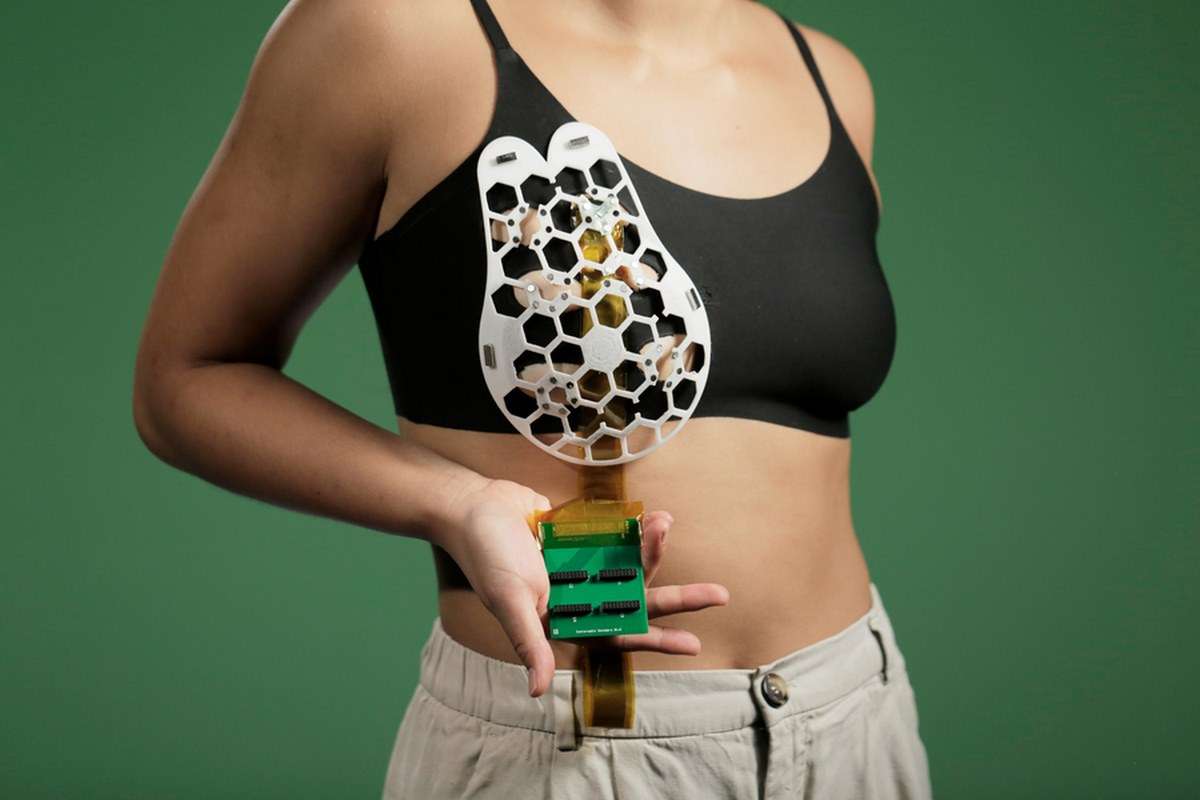Scientists Regrow Retina Cells to Tackle Leading Cause of Blindness Using Nanotechnology
Humans have no ability to regrow retinal pigment cells, but scientists have determined how to do it in vitro using pluripotent stem cells.

A miniature ultrasound device, fitted to a flexible polymer strap, can be slipped into a bra and detect breast cancer tumors among those most at risk of developing one.
The invention is significant for several reasons, and if perfected and developed, could save hundreds of lives.
The first reason it could be a major medical advancement is that developing breast cancer tumors in their earliest stages leads to a nearly 100% survival rate. The second is that developing a tumor even in the space between mammograms does happen, and not at a small rate. Depending on the country, 20-30% of all tumors are found in people who were in between routine screenings.
The device was developed at MIT, and once worn, it allows the user to move an ultrasound tracker across the bra and check for tumors.
"We changed the form factor of the ultrasound technology so that it can be used in your home. It's portable and easy to use, and provides real-time, user-friendly monitoring of breast tissue," says Canan Dagdeviren, an associate professor in MIT's Media Lab, senior author of the study demonstrating its functionality, and inventor of the device.
Dagdeviren drew inspiration for the device from her aunt, Fatma Caliskanoglu, who died after developing aggressive breast cancer tumors between routine screenings after just six months. Sitting by her bedside, Dagdeviren sketched out her idea for the wearable ultrasound bra insert.
In the study, the researchers tested the device on a 71-year-old woman with a history of breast cysts. They confirmed that it could detect the cysts, which were only 0.3 centimeters long, or around the size of an early-stage tumor. They also confirmed that it provided a depth of vision comparable to traditional ultrasound machines used to look for tumors in a hospital or cancer center.
The ultrasonic bra has won Dagdeviren high praise from her colleagues, including Anantha Chandrakasan, the Dean of MIT's School of Engineering, who also co-authored the paper on the device.
"This technology provides a fundamental capability in the detection and early diagnosis of breast cancer, which is key to a positive outcome," says Chandrakasan.
"This work will significantly advance ultrasound research and medical device designs, leveraging advances in materials, low-power circuits, AI algorithms, and biomedical systems."
Similar devices are being pioneered in Nigeria, the Guardian reports, where an entrepreneurial robotics graduate is developing a product called the Smart Bra to help reduce cancer rates in Nigeria where breast cancer is the most common type. Other wearable tech bras are being developed in Mexico and Switzerland.
It won't be praise from colleagues, though, which Dagdeviren hopes to achieve, but rather increasing breast cancer survival rates from 95% to 98%. It's not a big number, but it represents hundreds of women like her aunt Caliskanoglu—beloved family members.
WATCH how it works below from MIT…
SHARE This Simple And Lifesaving Piece Of Medical Kit With Your Friends…
Be the first to comment